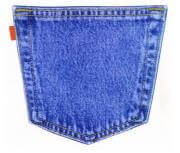
In the wake of Specsavers and Levi Strauss: Considerations in proving infringement of bare trade marks in Spain
Recent applications in Spain of CJEU cases about how/whether the obligation of genuine use is fulfilled for ‘combination’ trade marks (Colloseum Holding AG vs. Levi Strauss & Co and Specsavers International Healthcare Ltd et al vs. Asda Stores Ltd).
According to these decisions, the genuine use of a simple trade mark (a “bare” trade mark, i.e., a trade mark with no label, or words, etc.) can be based on the use of another trade mark, which combines the bare trade mark with another trade mark (a graphic, a three dimensional container, etc), provided that the bare trade mark element is perceived as an indication of origin within the composite mark. The facts underlying both cases were similar.
In the Specsavers case, the trade mark owner held the following trade marks:
(a) EUTMs No 1321298 and No 3418928, consisting of the word “Specsavers”
(b) Figurative EUTMs No 449256 and No 1321348, the “shaded logo”:

(c) EUTM No 5608385:

(d) EUTM No 1358589, the “wordless logo”:


In Colloseum, Levi Strauss owned several EUTMs covering the word mark LEVI’S, amongst others, for articles of clothing and also a German trade mark, which protected the shape of a pocket with the word element ‘LEVI’S’ in a red rectangular label at its left upper edge:

Levi Strauss also owned the coloured EUTM No 2 292 373 in red and blue, registered on 10 February 2005 for trousers (‘mark No 6’). Notably, this EUTM does not include LEVI’S as verbal element. It appears as follows:

Levi Strauss always uses the word element ‘LEVI’S’ in the red rectangular label at the left upper edge. The Court considered that use of the sign featuring the Levi’s word amounted to genuine use of this “bare” EUTM without the LEVI’s word.

The “Specsavers/Levi’s” doctrine was applied by the Spanish Supreme Court in the Cointreau judgment of last year. Cointreau is a well-known orange-flavoured liqueur with a characteristic bottle. The case handled an imitation of Cointreau’s bottle and the Supreme Court declared that the registered “bare” trade mark had been genuinely used, because the combination of the bare bottle with the label Cointreau was also registered. Therefore the Supreme Court affirmed genuine use and infringement of the registered trade mark.

The Cointreau decision departed from the previous “Oreo” judgment of the Supreme Court (2 September 2015). In “Oreo”, the Supreme Court declared the bare “Oreo” trade mark (provided below) should be revoked for non-use. The reason for this declaration was that the trade mark owner always used the Oreo cookie with the word “OREO” imprinted on it. As a result the owner failed to establish infringement. The judgment did not apply the “Specsavers-Levi’s” doctrine because the distinctiveness of the bare trade mark was very weak and no secondary meaning had been proved.
Originally published in BrandWrites 8th Edition.








